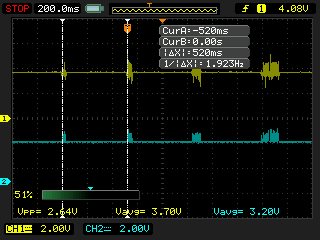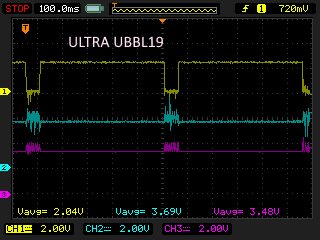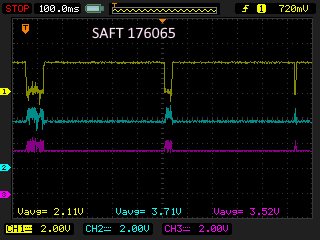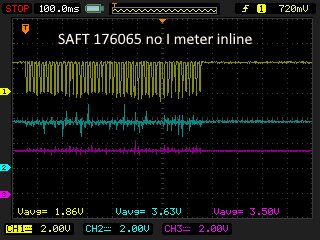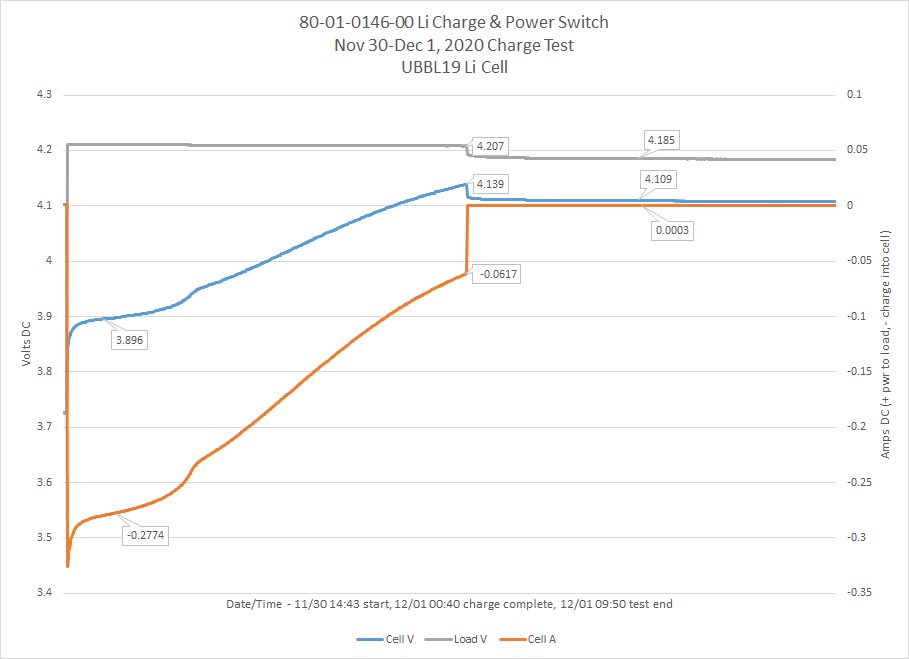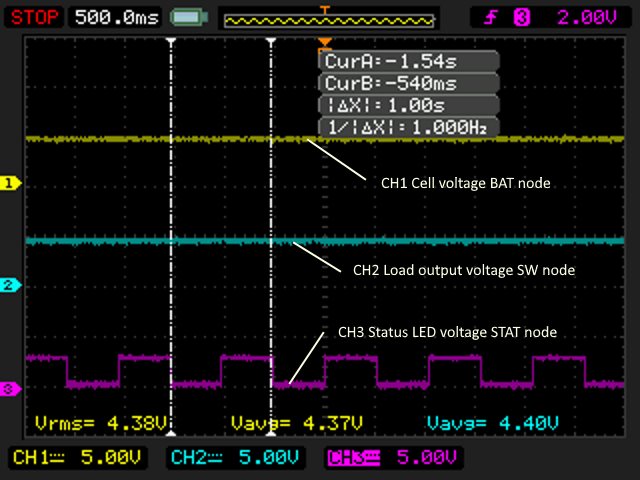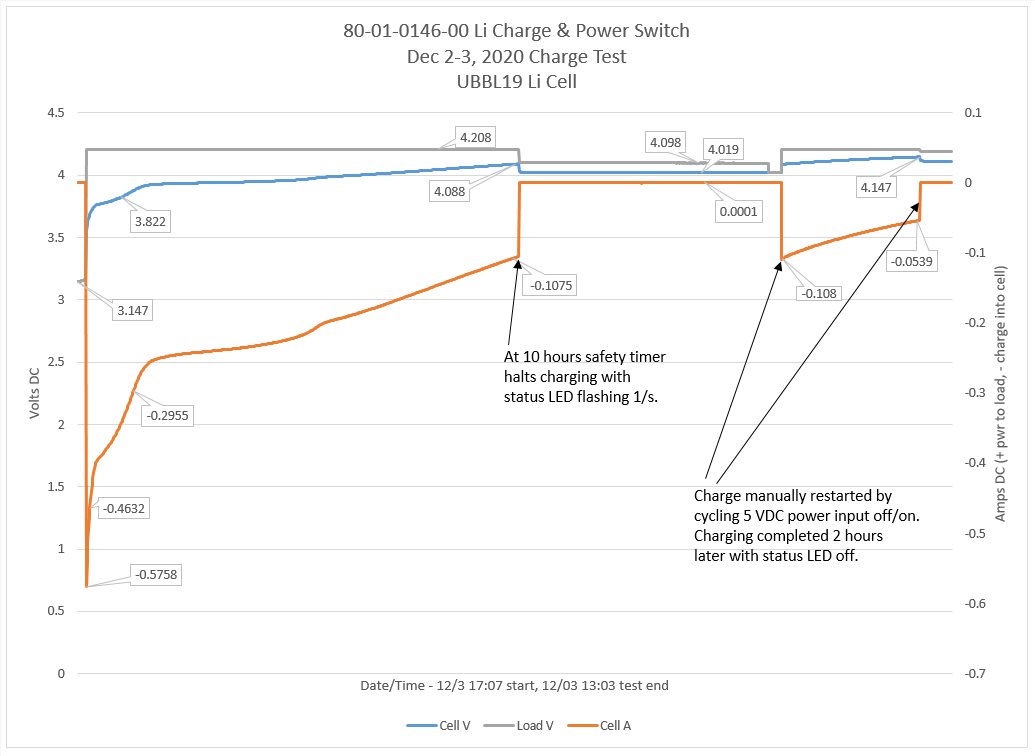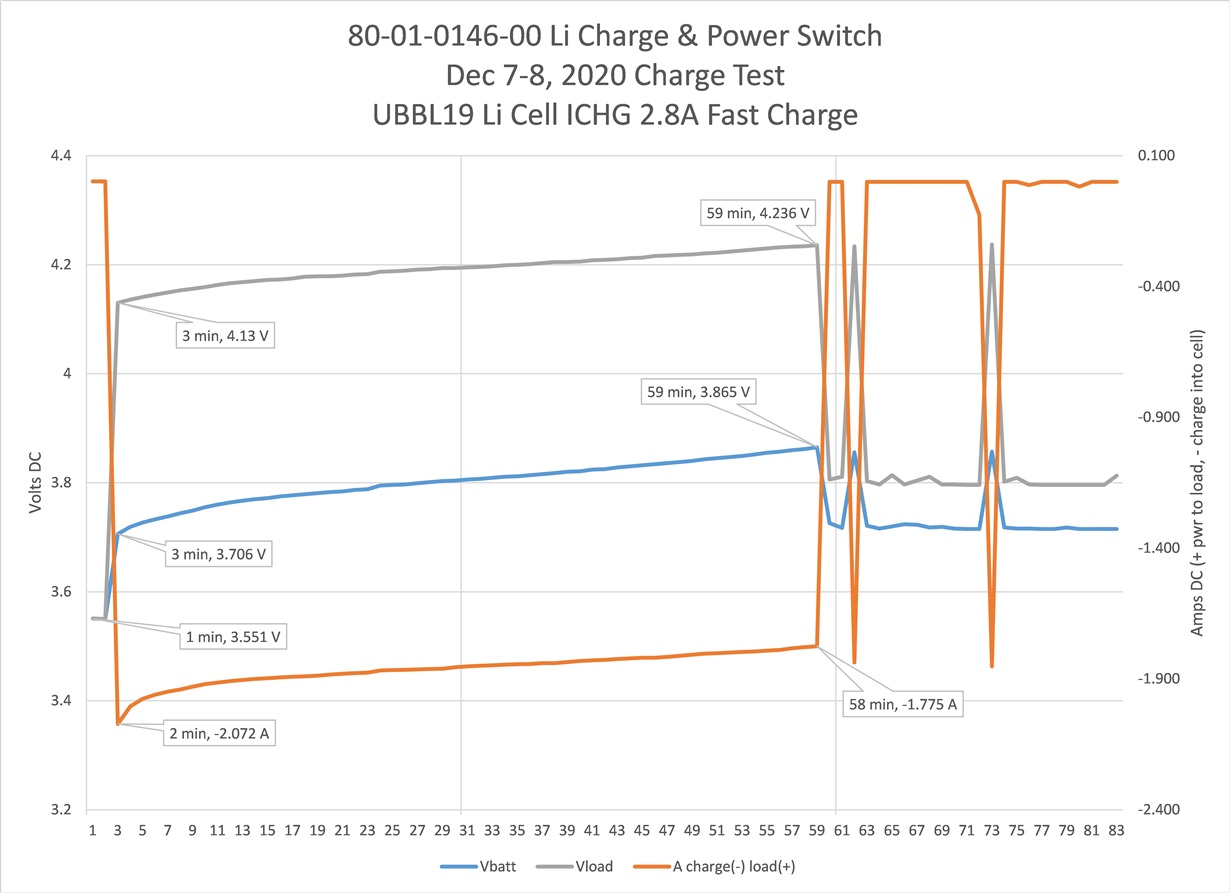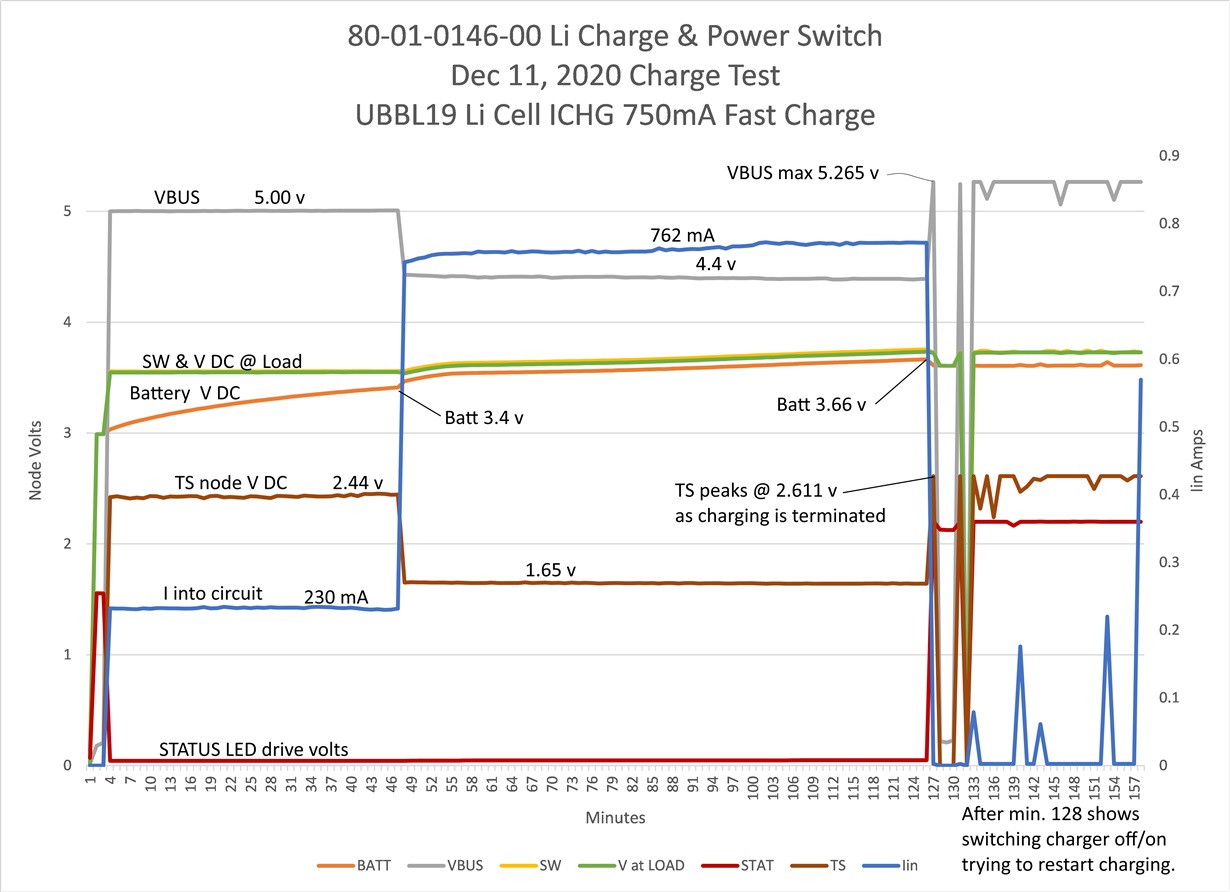The BQ25616 circuit shown at the top of this post in original question has been transferred to a PCB and while testing questions have arisen. The STATUS LED is flashing indicating a fault condition however it is not apparent which fault is occurring.
A Li battery discharged to a level of ~3.1 VDC is connected to J2. A resistor sized to draw 5 mA simulating load of device to be powered is connected to J1. J3 charger input connects to a power supply set to 5 VDC @ 2 A.
With charger input power supply off BQ25616 routes battery voltage to load. With charger input power supply on the following conditions are observed.
U1 pin 24 has 4.88 VDC. J1/load voltage 3.7 VDC. Battery positive terminal voltage 3.2 VDC. STATUS LED is flashing on/off. Current meter in line with battery positive wire shows cycling between battery supplying +5 mA to load and receiving bursts of -100 to -200 mA of charge current. The attached ‘scope capture of load voltage (yellow top trace) and battery voltage (blue lower trace) show voltage bursts that are sourcing the charge currents observed, this cycles at ~520 mS rate.
With the battery voltage at 3.2 VDC referring to data sheet’s ‘Figure 11. Battery Charging Profile’ one theory is the circuit is in the Pre-charge range on the threshold of Fast Charge and Voltage Regulation range. However the datasheet does not mention flashing status LED for such a state. Rather “status: charging (LOW), charging complete or charge disable (HIGH) or charging fault (blinking).” Reviewing section ‘9.3.9 Protections’ on data sheet it is not apparent which fault is being detected. Hints as to what I am missing?



